Beneficial Facts About Your Eyes and the Effects of Color
By Rick Allison; photos courtesy of the author
As seen in the September 2000 Model Aviation.
Year ago, I had a pin on my “flying hat” that I picked up at a street-fair craft booth. It was a pair of aviator wings, with a human eye superimposed on a hand for a center emblem—the essence of Radio Control (RC) flight.
Many of us who fly RC models have heard the spectator question: “How far away can you fly them?”
We all give roughly the same answer, “Farther away than you can see them,” and some of us have even had that unfortunate experience!
When it comes to RC model flying, vision is the indispensable cornerstone of a demanding hand/eye coordination sport—perhaps the ultimate in hand/eye sports.
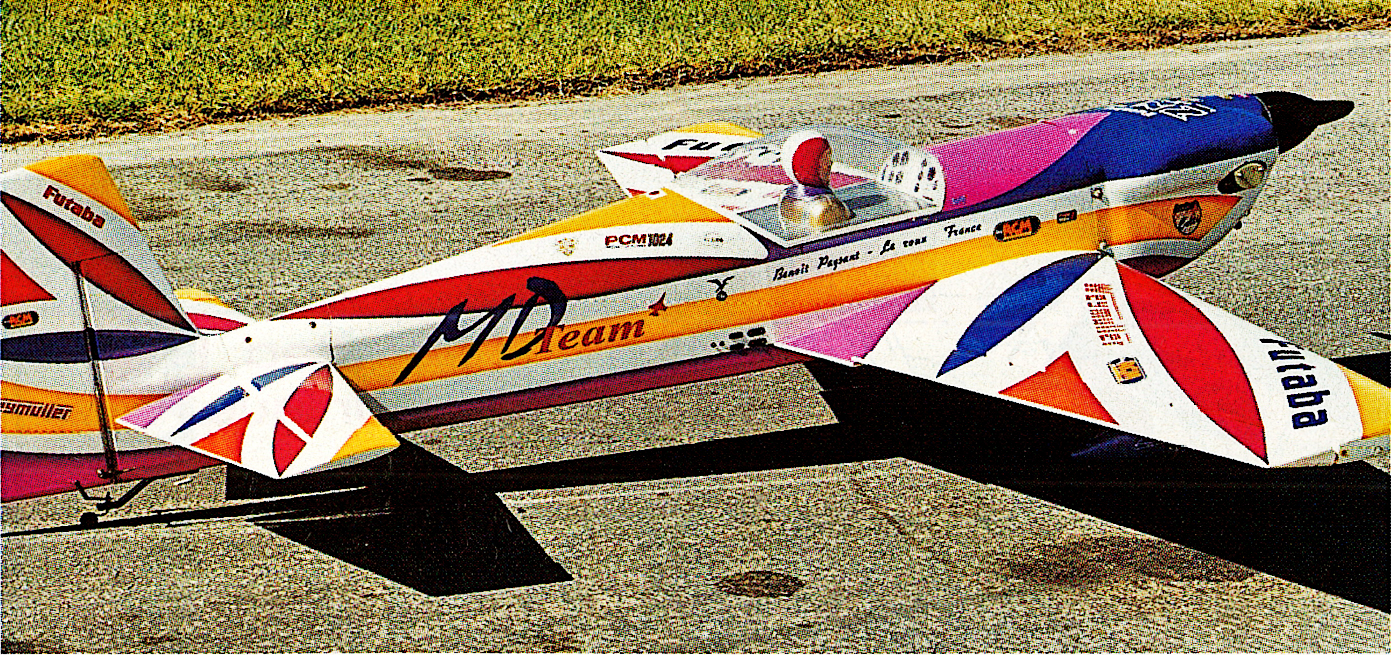
The gold standard for the toughest hand/eye feat in sports has long been hitting a major-league fastball, but years ago, a major-league hitting coach (who was also an RC pilot) told me he thought precision RC flying was much harder!
It must depend on what you’re good at. I’d rather fly RC Aerobatics by candlelight in a January blizzard than watch a 98 mph Randy Johnson heater whistle under my chin on a bright, sunny July afternoon.
On the other hand, nobody is writing me checks with long strings of zeros on them for flying model airplanes, so strictly from a career standpoint, maybe I opted to put my hand/eye skills to the wrong use.
Hands—the important other half of the hand/eye squad—are usually easy-care items. Glue removal, a little soap and water, lotion, and an occasional manicure (use nail clippers; spinning propellers are difficult to handle for fine work) are all most paws need to stay in tune.
Taking care of your eyes is a little more difficult and expensive.
Each human eye is a single-lens, camera-type unit. Humans are issued two of them in the color of their chromosomes’ choice at birth. This bicameral arrangement provides depth perception, which is vital when it comes to flying RC model aircraft—it is the major tool we use to judge distance and locate the model in three-dimensional space.
An anatomy review is worthwhile.
The optic nerve connects the eye to the vision center of the brain’s cerebral cortex. Visible light is focused on the receptor cells (rods and cones) of the retina by the cornea and the lens, and this stimulus creates visual images that are shipped to the brain, where all the data-sorting and processing is done.
“Seeing” is the result of all this.
However, this stripped-down version isn’t the whole story. The truth is, we don't know the whole story.
Although we know something about how visual images are received by the eye, we still don’t know exactly how they are processed, compiled to indicate motion, stored, and acted upon by the brain.
There is now evidence to suggest that at least some image processing takes place in the eye before the information is ever sent to the brain—particularly the part that has to do with contrast and contour enhancement. Some information is emphasized, and some is discarded or toned down.
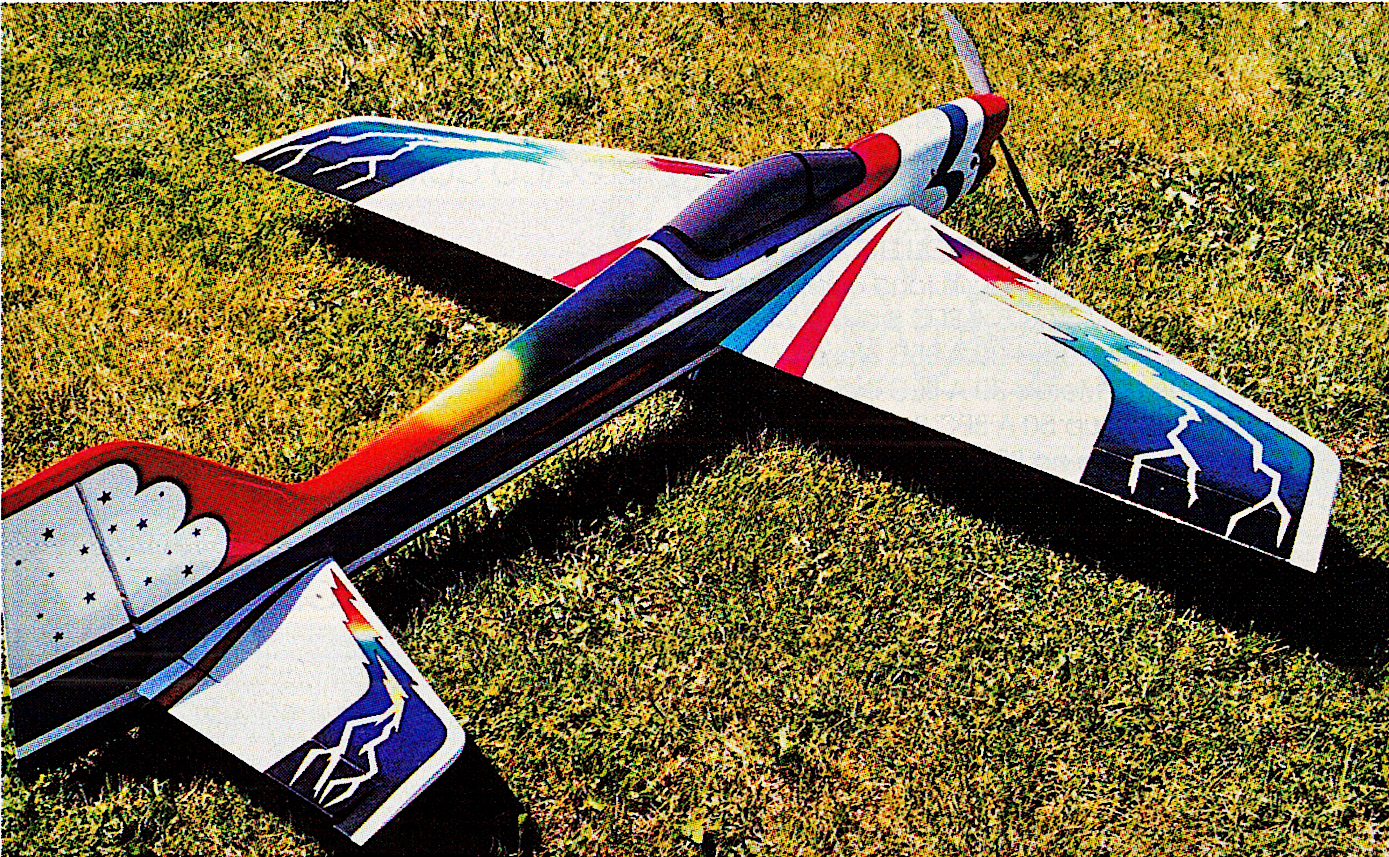
Still more processing happens along the way in the optic nerve, and things are finished off in the cerebral cortex.
The result, the theory goes, is a far-sharper image in the brain than the original picture focused on the retinal wall. This is your brain’s version of computerized photo enhancement.
The receptor cells of the retina come in two types: rods, which are light-sensitive units, and cones, which give us color vision.
Rods are very sensitive and efficient in low light, peripheral, and night vision, and are concentrated toward the periphery of the retina. Cones need more light to operate efficiently and are concentrated near the center of the retina.
There is one type of rod cell, but there seem to be at least three types of cone cells—each sensitive to a different bandwidth of the visible light spectrum. These cone cells are designated as blue-absorbing, greenabsorbing, and red-absorbing.
Each type of cone cell is sensitive to a broad band of the visible spectrum (and overlap to cover the entire spectrum), but each has a maximum sensitivity to a different portion of that spectrum.
Each type of cone cell “sees” a particular range of colors, and each has a peak response that covers a narrower band within that range.
As each human is genetically unique (save for identical twins), each pair of eyes is unique. Individuals see different colors in varying levels of intensity. Some people see red very well, some don’t see blue at all, some see green very plainly, etc.
This has to do with the numbers and types of cone receptors in their eyes, which is a function of the genes their ancestors bequeathed them.
I see a yellow basecoat much better than a white one, so most of my airplanes are yellow. The maximum sensitivity of red-absorbing cone receptors is in the yellow/orange end of the band, which probably means that my progenitors willed me a bunch of that particular brand.
Another consideration is contrast, which has to do with our ability to determine shapes and form discrete images—to separate an object from its background.
There are two types of contrast: color and gray-tone, or grayscale, which is probably most important to an RC pilot.
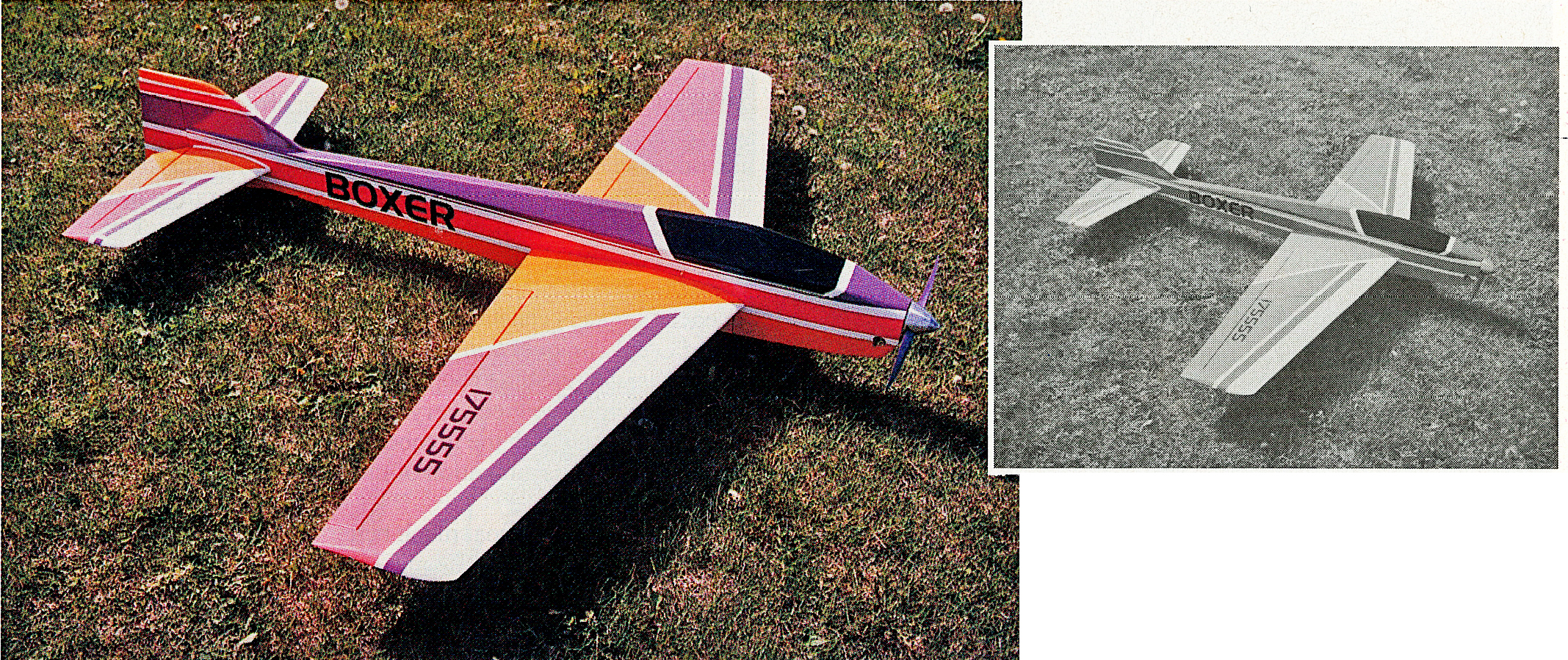
Grayscale contrast equates to the intensity values in a black-andwhite photograph. The maximum grayscale contrast is between black and white. Color contrast has to do with the distance apart that two colors are in the color spectrum, and how close each shade is to its own primary color.
It is possible for two colors to have high color contrast and low grayscale contrast; primary red and primary blue appear as closelyrelated gray tones in a black-and-white photo.
As with color, individuals vary in their ability to perceive contrast. Generally, those with good low-light and night-vision ability also do well with grayscale contrast.
Not all eyes are created structurally equal. Those of us who wear corrective lenses have learned some of the hard facts concerning our own dysfunction, be it myopia (short-sightedness),
hypermetropia (far-sightedness), or astigmatism (irregular eyeball shape). Those of us in my age group have no doubt also learned about presbyopia (lack of accommodation).
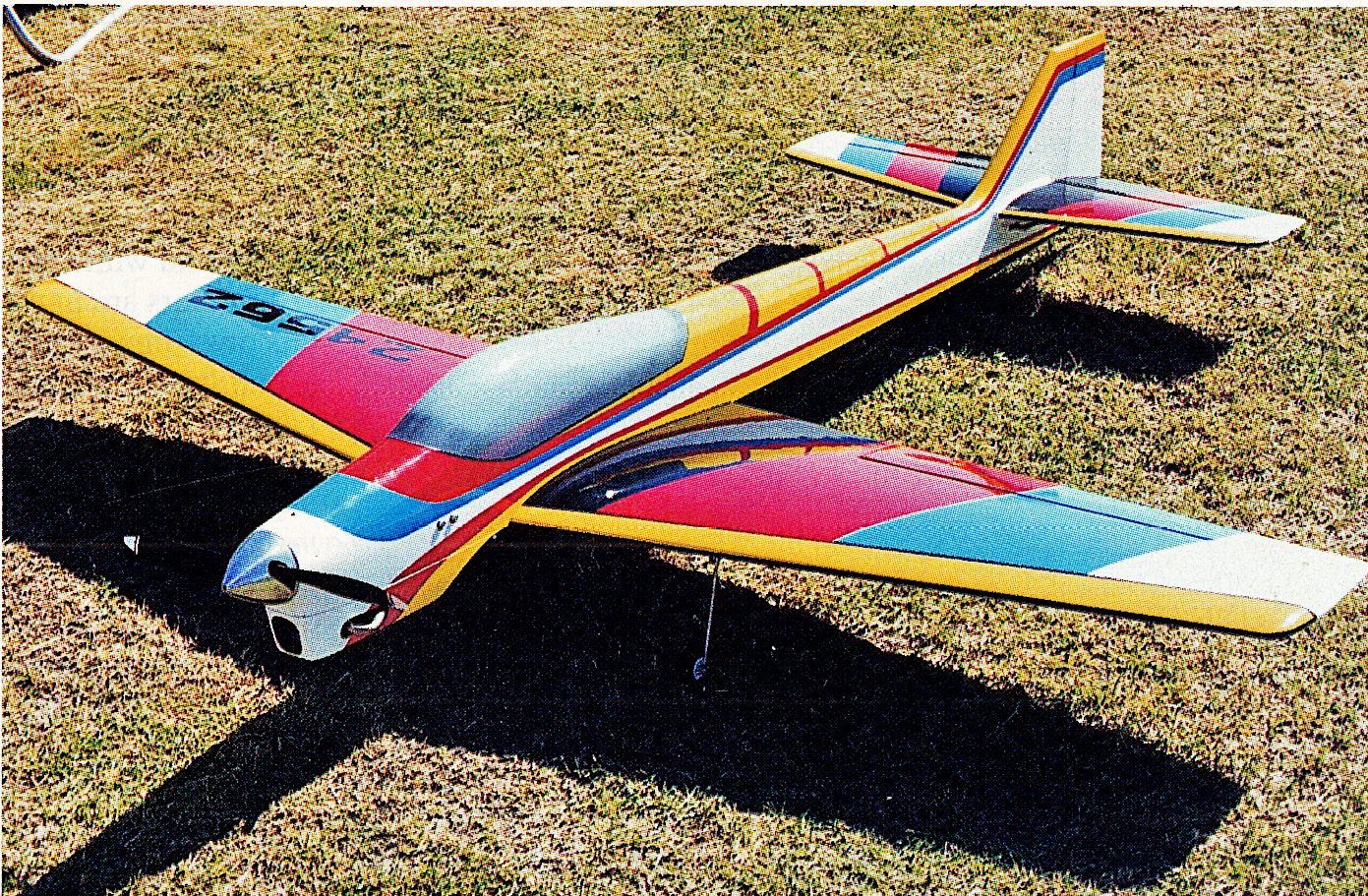
Most of these basic defects relate to the shape of the eye. Presbyopia is a feature (I hesitate to call it a disease) of age. The “mature” lens becomes less elastic and the muscles that change its shape become less efficient, causing the need for bifocals or reading glasses.
Eyes are not created equal in another sense (actually, several senses). We are familiar with the standard measurements of visual acuity, such as 20/20 or 20/100, and we know about the eye charts that start with that big old E.
Corrective lenses are prescribed on the same basis; the shape of the eyeball is “corrected” to give the highest, sharpest degree of static visual acuity. During the eye exam, the doctor has us look at stationary objects and symbols, and report on how well we see them.
The problem with RC flying, hitting baseballs, and every other hand/eye sports activity is that the objects we want to see most are moving. Some of them are moving very rapidly. The visual acuity we need is dynamic, rather than static.
Unfortunately; it is possible to have excellent static visual acuity—natural or corrected—and still have rather poor dynamic visual acuity.
Poor dynamic visual acuity is not as easy to correct; the eyes (and presumably the brain) must be retrained with eye-tracking exercises. A field of clinical study and care has sprung up around this problem, known as Sports vision.
Clinics and resource/research organizations with the term Sports vision in the title are opening across the country. If you have a problem seeing objects in motion, seek their services.
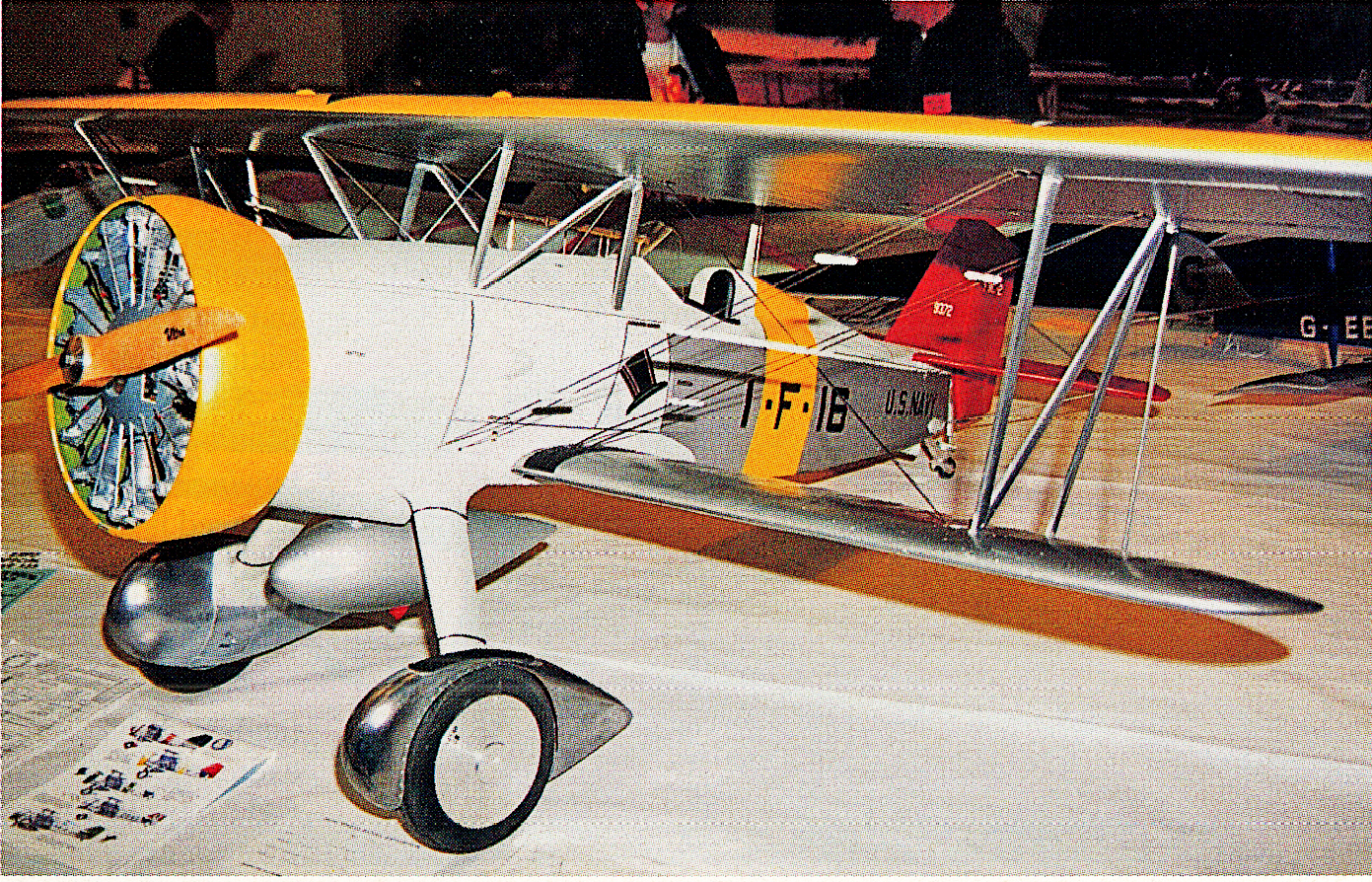
Applying all this information to piloting RC models requires some reasonable assumptions:
First, the better you can see the model at any distance, the better you can control its flight. This is true no matter the level of basic piloting skill.
Second, since all persons have unique visual characteristics and vary in ability to perceive color, motion, and contrast, how we choose our aircraft color and trim schemes drastically affects RC command and control abilities.
Aircraft color and trim schemes can be divided into two types: those designed to aid (or in case of camouflage, prevent) visual identification of aircraft or aircraft attitude, and those designed to impress onlookers on the ground or satisfy the owner's sense of esthetics.
Good schemes for identification seem to follow a few simple rules.
First, a light base color is used-usually white or yellow, for maximum reflection. The more light reflected by an object, the better it is seen.
Second, trim colors are chosen with high contrast values in mind.
Third, the top and bottom schemes are different, with lighter colors predominant on top (for maximum reflection) and darker colors predominant on the bottom (for maximum contrast against the lighter-colored sky).
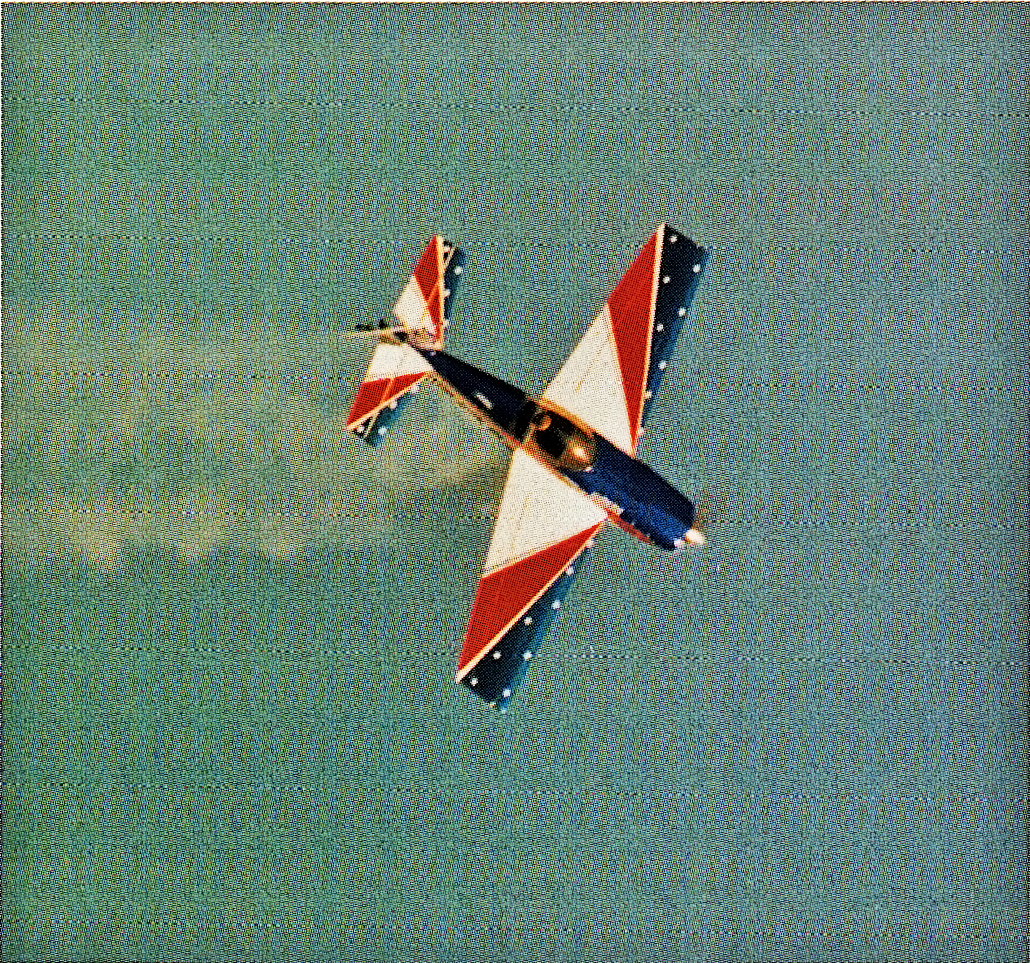
For high-visibility schemes, trim colors should be chosen first for grayscale contrast, next for color contrast, and last for esthetic value.
The reason for putting grayscale first is simple—the ability to detect and perceive color diminishes rapidly as distance increases or available reflected light decreases, but strong gray-tone differences persist, which brings up the next point.
Changing·light and atmospheric conditions also affect color perception.
You might have had the experience of flying an “airplane-shaped hole in the sky” on a gray, cloudy day. All of the colors tum muddy, then gray, and finally, black as the light goes away.
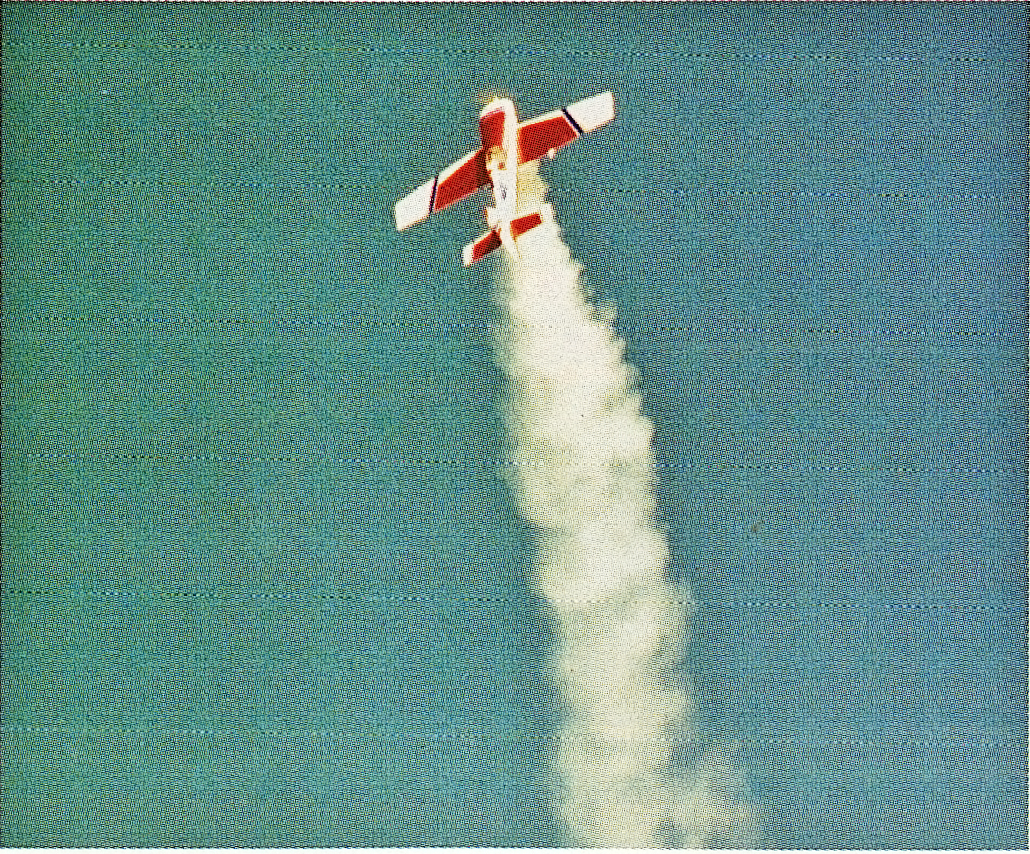
What happens is our retinal color cones become much less active in the low light, and only the rods are really on the job. The same model flown at the same distance might be a riot of color on a bright and sunny “severe-clear” day, but right now, it's a black hole with wings.
This phenomenon is analogous to taking a color photo with an ordinary camera under low-light conditions—the available light isn’t strong enough to fully activate the chemical processes of the color film, and the photo turns out dim and muddy.
Even given clear and bright conditions, the colors on the most-visible average-size models start to “gray out” at 160-175 meters.
Coincidentally (or perhaps not), this is the same distance that the RC Pattern rules stipulate as the maximum line of flight distance from the judges. The colors of poorly chosen schemes go away long before this and can become nearly invisible at 150 meters under low-light conditions.
However, RC pilots routinely fly models at distances much greater than 150 meters. Airplanes 500-600 meters from the pilot at the farthest point in the flight path are common.
At that distance, even the right colors are of little help; we also need the right shapes.
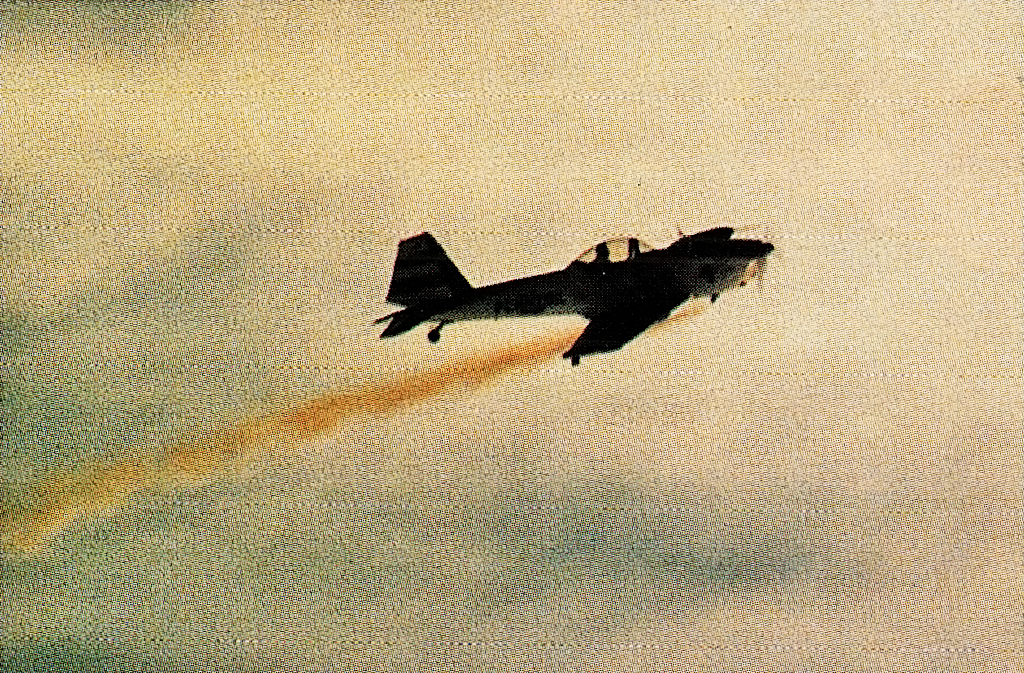
I’ve seen many colorful schemes in narrow stripes, sunbursts, or small blocks, using eight or nine different shades. These artworks are glorious on the ground, but amorphous masses in the air.
The eye needs large, clearly delineated swatches of strong grayscale contrast for good distance resolution.
Related shades close together look like a single gray-tone at a distance. If trim shades are light pastels or metallics and the shapes are close to the outline borders of the model, the single tone at a distance is light gray.
Against a light-gray sky at 400-plus meters, even the outline and contour of the model suffers, and you have an excellent recipe for invisibility.
Color scheme dos and don’ts center around choosing contrasting colors you see well, and applying them in bold lines and large, strong shapes your eye can resolve at a distance.
Bear in mind that even strong colors can run together, and watch the grayscale values. More than three to four main colors will make a flying mud pie; if you must use more, make the extra colors narrow accent stripes.
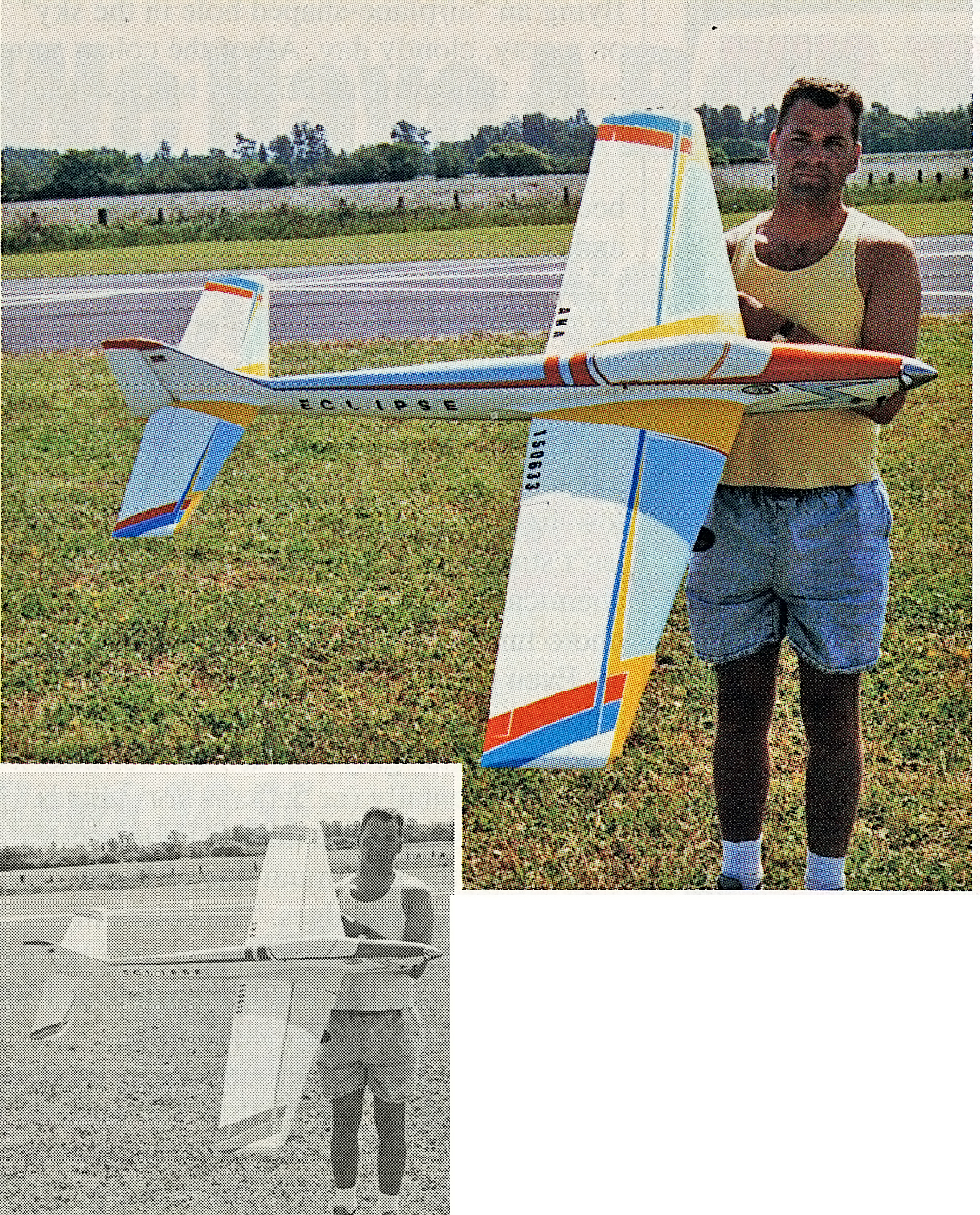
Keep the shapes and colors on the top and bottom of the model different and put the dark colors close to the outlines. Divide or border strong, dark colors with light colors to provide better contrast. Blocks, stripes, and sunbursts should be wide and bold, and the lines and angles placed to aid seeing aircraft attitude vs. track.
Flying environment should also be considered. If the predominant color of the normal sky where you fly is bright blue, a white basecoat scheme or white wingtips will usually show up very well.
If the sky is usually a milky, mottled, or muted overcast (as is often the case in the Pacific Northwest), white might not be the best choice—especially near the model outlines.
If you are in doubt as to whether a particular scheme will show up well, take a black-and-white photo of it or run a color print through a black-and-white copier to check the gray tones.
This isn’t a surefire technique, but it will provide a reasonable approximation before you commit to the spray gun or covering iron.
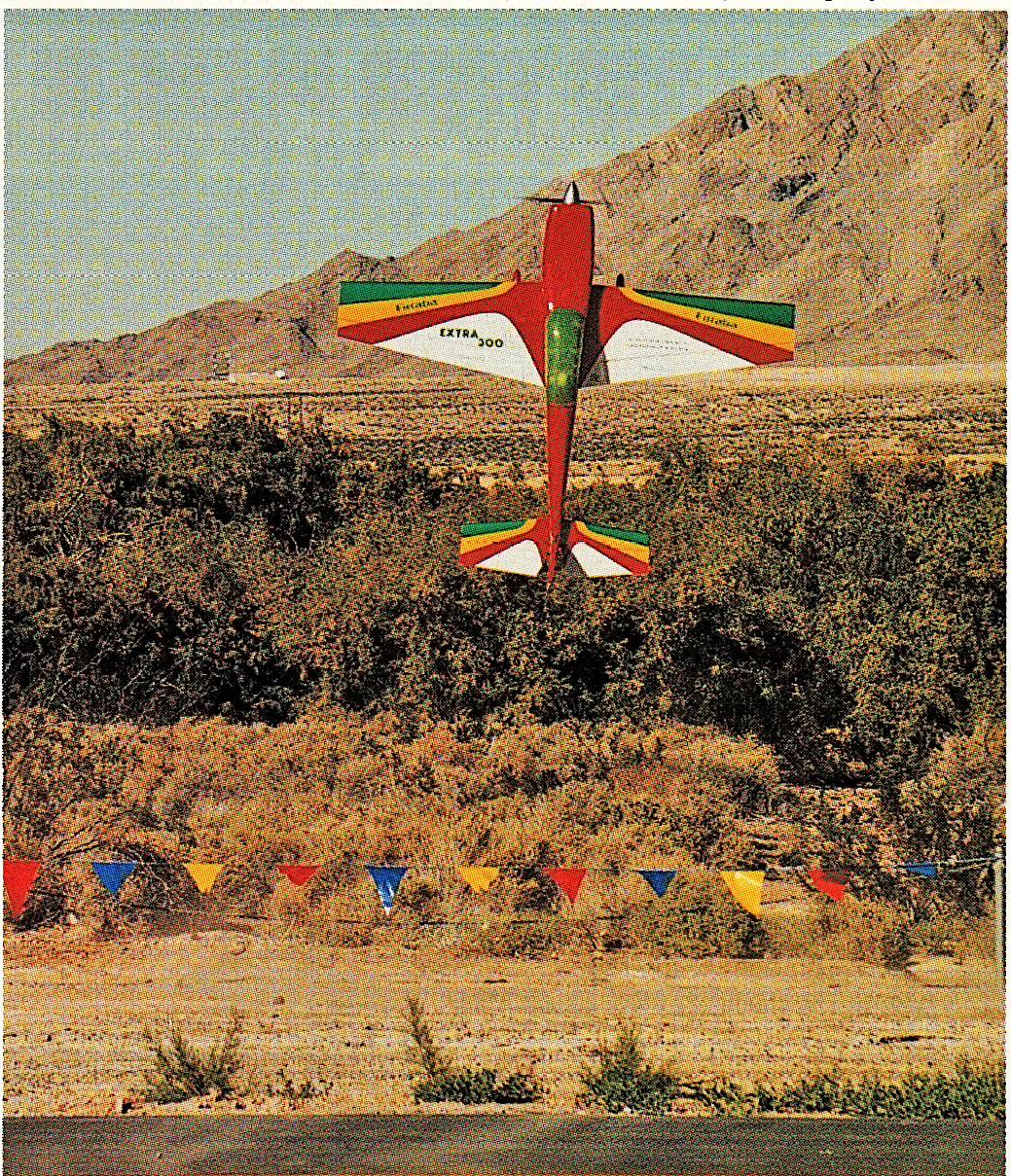
Visual health is a very important factor in the RC flying fun equation.
Most of us are aware of the need for regular eye exams. If possible, spend the extra money at least once every few years and have your eyes examined by an ophthalmologist rather than an optometrist.
An ophthalmologist is a medical doctor trained to treat all diseases and conditions of the eye, and an optometrist is a licensed professional qualified to examine eyes for visual defects and prescribe corrective lenses.
Most optometrists are excellent at prescribing to correct visual defects, but the ophthalmologist’s exam will do that and assess your eyes’ overall health.
Light conducts the valuable visual information needed to fly our models, but the wavelengths of light we don’t see, such as ultraviolet (UV), can lead to cataract formation, macular degeneration, and an early end to all flying fun.
Sunglasses are mandatory for RC pilots. Good sunglasses should protect your eyes by filtering 99-100% of UVA and UVB light.
Your dispensing optician can help you with various coatings and tints that will filter UV, reduce glare, and increase comfort in bright light, but some will not only block the harmful wavelengths but a bit too much visible light. I prefer the lightest tint I can find that provides the essential UV protection.
Bad sunglasses can be worse for your eyes than no sunglasses.
The worst-case scenario is a very dark lens that reduces a great deal of the visible light but doesn’t block enough UV light. Your pupil expands behind the dark lens in an effort to maximize the available light, and the harmful UV rays march right in through the open door.
Read the label, get a guarantee, or better yet, deal with a reliable optician. Price is not generally a reliable indicator of protection when it comes to sunglasses, but it usually means something when it comes to scratch resistance, optical purity, and frame durability.
If you need corrective lenses, tell your prescribing professional what you intend to do with your glasses, including your penchant for looking at high-speed objects far off in the distance at angles as far as 70° above the horizon.
It may make a difference in how he or she chooses to prescribe for your condition.
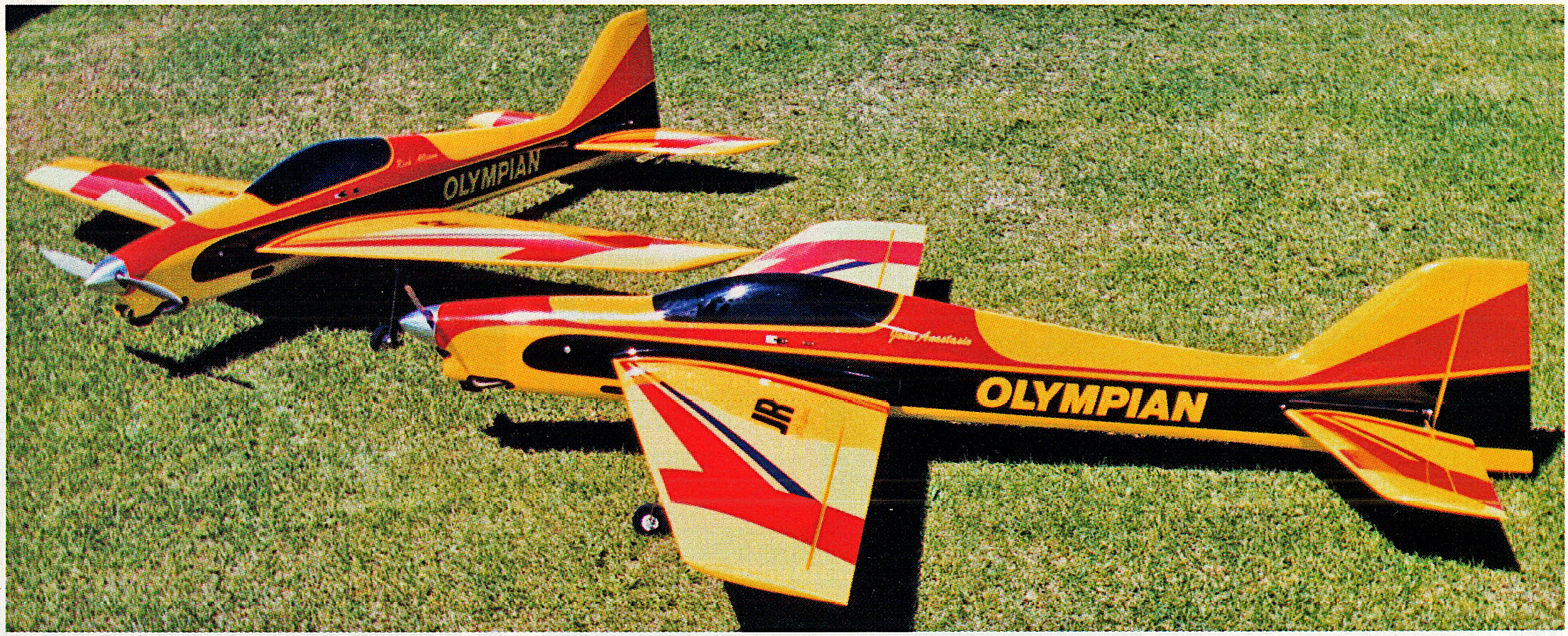
If you normally wear bifocals and can afford it, have a pair of single-vision glasses made just for flying.
Even the most-advanced “lineless” bifocals have a far-more-restricted visual field than single-vision glasses, and holding your head and neck at the angle to keep a high-flying model in the optical “sweet spot” of the distance portion of the compound lens can cause headaches and neck strain.
Your eyes are physical organs—not mechanical devices.
They are strongly affected by many different drugs—prescription and otherwise—and by alcohol use.
When they get tired, they lose accommodation and depth perception, and even the photo-chemicals in the receptor cells get used up and need replenishment. The neurons in your brain and optic nerve misfire with lack of sleep. Of the five senses, vision is most affected by exhaustion.
The best thing you can do to make your color scheme look good in the air on Sunday morning is to get plenty of sleep Saturday night.







Comments
Add new comment